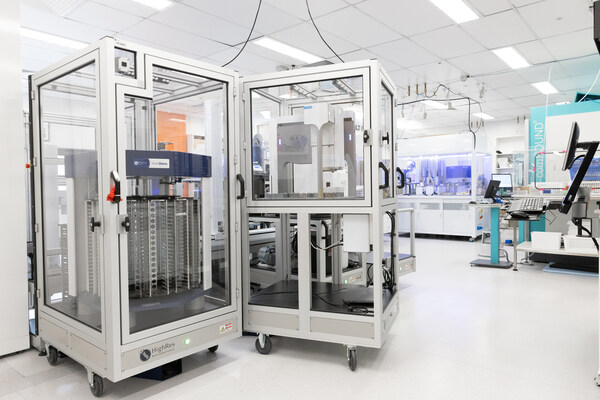To understand different diseases, we need to be able to model them in all their complexity – Zebrafish are proving well-suited to the task.
Zebrafish – they’re probably not the first thing you think of when considering ground-breaking medical research. But these tiny fish can be used to model a range of human illnesses, increasing our understanding of complex diseases and paving the way for the discovery of new drugs to fight them.
Dr Jean Giacomotto and his team at the Griffith Institute for Drug Discovery, Griffith University, are using zebrafish to model a range of diseases of the brain and spinal cord, including motor neuron diseases and schizophrenia.
“I believe that these small fish will have an important impact on the discovery of medicines for neuromuscular and neurological disorders, and for drug discovery as a whole. These diseases are very difficult to reproduce in a single cell, making the search for treatments difficult. Zebrafish open up a new avenue for the screening of potential treatments and for understanding the progression of these terrible conditions,” said Dr Giacomotto.
Dr Giacomotto has strong experience working with a range of both cellular and animal models. For example, during his PhD, he and his collaborators used a worm model to screen marketed drugs against Duchenne Muscular Dystrophy, an inherited muscle degeneration disease with no efficient therapies. This led to the identification of an already approved drug that could be used to treat this condition.
Currently, Dr Giacomotto’s team use zebrafish as models as they allow for the mapping and investigation of complex factors contributing to diseases within a simple organism that can be easily grown and observed. Most importantly, this animal also enables them to screen a large number of potential medications quickly, a process that would not otherwise be possible.
For example, in the area of motor neuron diseases (MND), the team have developed zebrafish models that mimic the different forms of spinal muscular atrophy (SMA). This is a genetic condition that affects the spinal cord nerves that control muscle movement including actions like breathing and swallowing. SMA typically starts to impact patients when they are infants, and one in 10,000 live births in Australia are affected by it. While current treatments extend the life expectancy of sufferers, there is no cure.
The zebrafish SMA models exhibit motor neuron degeneration and progressive loss of motor functions, the same as observed in human patients. Dr Giacomotto and his team use these animals to try and understand the underlying pathogenic mechanisms of the condition and look for drug treatments. Interestingly, these SMA models and the team’s overarching research approach can also be used to study another type of MND, Amyotrophy Lateral Sclerosis (ALS).
“We have developed very useful zebrafish models for SMA and are working to extend our approach to ALS and MND. Our work should help to better understand these diseases, their potential common degenerative mechanisms, and potential strategies to treat or cure them,” said Dr Giacomotto. “We’re also considering how we can expand our range of models to run research and drug screening programs for a range of other conditions. This small fish has high potential to provide us with the answers to treating a range of complex diseases.”
Please select Youtube Card(s)
Dr Giacomotto and his team are open to collaborations with industry and academic groups looking to develop or utilise zebrafish as disease models.
To learn more about Dr Giacomotto’s research and his contact details:
We are very grateful for any individual or corporate donations and bequests to help us take our research forward. To contribute to GRIDD’s ground-breaking research please find more information here:
Through the GRIDD Director’s Circle you can also help provide career and personal development opportunities for GRIDD’s students and early career researchers.
To keep up to date with developments at GRIDD:
Banner image by Dr Jean Giacomotto entitled ‘Beauty from the fish: Motoneurons in View’– lateral view of a three days post fertilization zebrafish larvae expressing green fluorescent protein in the spine and motoneurons.
Sustainable Development Goals
Griffith University is aligned with the United Nation’s Sustainable Development Goals (SDGs) and is committed to advancing knowledge, innovation, and practices that promote holistic health and well-being.















